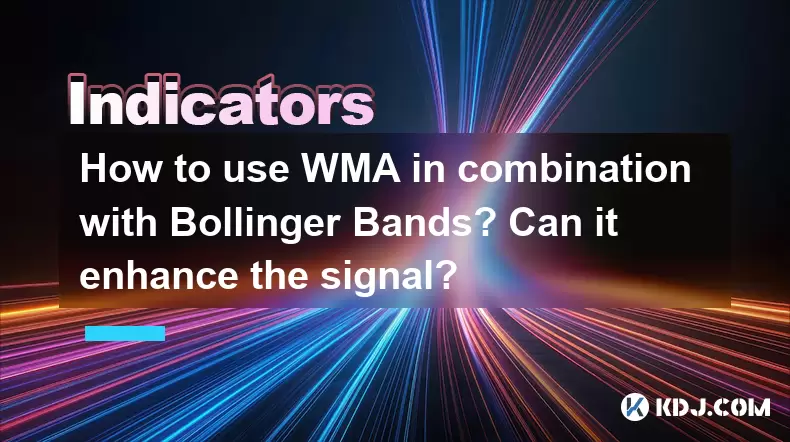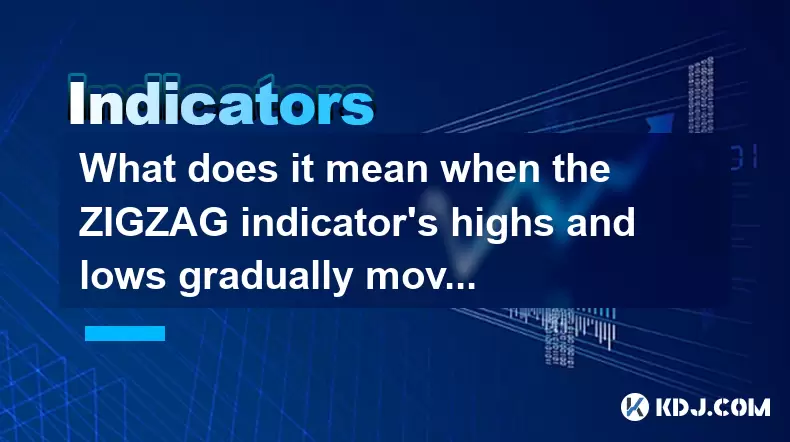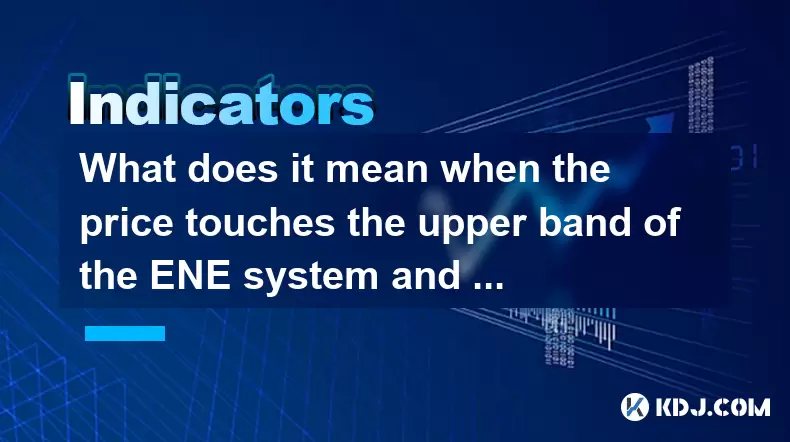-
 Bitcoin
Bitcoin $116700
0.13% -
 Ethereum
Ethereum $4229
5.18% -
 XRP
XRP $3.290
0.28% -
 Tether USDt
Tether USDt $1.000
0.01% -
 BNB
BNB $804.4
1.46% -
 Solana
Solana $181.3
1.92% -
 USDC
USDC $1.000
0.02% -
 Dogecoin
Dogecoin $0.2453
8.11% -
 TRON
TRON $0.3359
-0.82% -
 Cardano
Cardano $0.8187
2.71% -
 Hyperliquid
Hyperliquid $43.56
6.46% -
 Chainlink
Chainlink $21.22
9.48% -
 Stellar
Stellar $0.4533
0.95% -
 Sui
Sui $3.948
2.90% -
 Bitcoin Cash
Bitcoin Cash $571.0
-2.75% -
 Hedera
Hedera $0.2657
1.33% -
 Avalanche
Avalanche $24.32
2.80% -
 Ethena USDe
Ethena USDe $1.001
0.02% -
 Litecoin
Litecoin $122.2
-0.70% -
 Toncoin
Toncoin $3.440
1.95% -
 UNUS SED LEO
UNUS SED LEO $8.978
-0.09% -
 Shiba Inu
Shiba Inu $0.00001385
5.32% -
 Uniswap
Uniswap $10.94
0.24% -
 Polkadot
Polkadot $4.116
3.88% -
 Dai
Dai $1.000
0.00% -
 Pepe
Pepe $0.00001233
5.82% -
 Bitget Token
Bitget Token $4.511
0.53% -
 Cronos
Cronos $0.1572
2.50% -
 Monero
Monero $272.0
-1.82% -
 Ethena
Ethena $0.7563
17.60%
How to use WMA in combination with Bollinger Bands? Can it enhance the signal?
Combining WMA and Bollinger Bands can enhance trading signals in the crypto market, providing insights into trends and volatility for better entry and exit points.
May 21, 2025 at 07:01 pm

The Weighted Moving Average (WMA) and Bollinger Bands are powerful technical analysis tools that traders often use to make informed decisions in the cryptocurrency market. Combining these two indicators can potentially enhance trading signals, providing a more robust analysis of market trends and volatility. In this article, we will explore how to use WMA in combination with Bollinger Bands, and whether this combination can enhance the signals traders receive.
Understanding WMA and Bollinger Bands
WMA, or Weighted Moving Average, is a type of moving average that assigns more weight to recent price data. This makes it more responsive to recent price changes compared to a Simple Moving Average (SMA). The formula for WMA gives each price point a weight based on its position in the data series, with the most recent prices receiving the highest weights.
Bollinger Bands, on the other hand, are a volatility indicator developed by John Bollinger. They consist of three lines: a middle band, which is typically a 20-period SMA, and two outer bands that are standard deviations away from the middle band. The upper band is calculated by adding two standard deviations to the middle band, and the lower band is calculated by subtracting two standard deviations from the middle band. Bollinger Bands expand and contract based on market volatility, providing insights into potential price breakouts and reversals.
Setting Up WMA and Bollinger Bands on Your Chart
To effectively use WMA in combination with Bollinger Bands, you first need to set them up on your trading chart. Here’s how you can do this:
- Choose a Trading Platform: Most cryptocurrency trading platforms, such as Binance or Coinbase Pro, offer charting tools that include both WMA and Bollinger Bands. Ensure that your chosen platform supports these indicators.
- Add WMA to Your Chart: Look for the indicators menu on your trading platform. Select WMA and set the period according to your trading strategy. A common period for WMA is 20 days, but you can adjust this based on your preferences.
- Add Bollinger Bands to Your Chart: Similarly, find Bollinger Bands in the indicators menu. The default settings are usually a 20-period SMA for the middle band and two standard deviations for the outer bands. Adjust these settings if necessary to suit your strategy.
Interpreting WMA and Bollinger Bands Together
Once you have both indicators set up on your chart, the next step is to interpret them together to enhance your trading signals. Here’s how you can do this:
- Identify Trends with WMA: The WMA can help you identify the overall trend of the cryptocurrency. If the WMA is sloping upwards, it indicates an uptrend, and if it’s sloping downwards, it indicates a downtrend. The WMA’s responsiveness to recent price changes makes it particularly useful for short-term trend analysis.
- Assess Volatility with Bollinger Bands: Bollinger Bands provide a visual representation of market volatility. When the bands are wide, it suggests high volatility, and when they are narrow, it suggests low volatility. This can help you gauge potential price movements.
- Combine Signals for Enhanced Analysis: By combining the trend information from WMA with the volatility information from Bollinger Bands, you can get a more comprehensive view of the market. For example, if the WMA is sloping upwards and the price is touching the lower Bollinger Band, it could be a signal to buy, as it suggests that the price is oversold within an uptrend.
Using WMA and Bollinger Bands for Entry and Exit Points
One of the primary benefits of combining WMA and Bollinger Bands is the potential to identify more accurate entry and exit points for trades. Here’s how you can use these indicators together to make trading decisions:
- Entry Points: Look for scenarios where the WMA and Bollinger Bands align to suggest a strong entry point. For instance, if the WMA is trending upwards and the price touches the lower Bollinger Band, it could be a good time to enter a long position. Conversely, if the WMA is trending downwards and the price touches the upper Bollinger Band, it could be a good time to enter a short position.
- Exit Points: Similarly, you can use these indicators to determine when to exit a trade. If you are in a long position and the price touches the upper Bollinger Band while the WMA starts to flatten or turn downwards, it might be a signal to exit the trade. For a short position, if the price touches the lower Bollinger Band and the WMA starts to flatten or turn upwards, it might be time to exit.
Enhancing Signals with Additional Confirmation
While the combination of WMA and Bollinger Bands can provide valuable insights, it’s often beneficial to use additional confirmation tools to enhance the reliability of your signals. Here are some ways to do this:
- Volume Analysis: High trading volume can confirm the strength of a price move. If the price touches the lower Bollinger Band in an uptrend and the volume is high, it adds more confidence to a potential buy signal.
- Other Indicators: Consider using other technical indicators, such as the Relative Strength Index (RSI) or the Moving Average Convergence Divergence (MACD), to confirm signals from WMA and Bollinger Bands. For example, if the RSI indicates that the cryptocurrency is oversold while the price touches the lower Bollinger Band in an uptrend, it strengthens the buy signal.
Practical Example of Using WMA and Bollinger Bands
Let’s walk through a practical example of how to use WMA and Bollinger Bands together to make a trading decision:
- Scenario: You are analyzing the price chart of Bitcoin (BTC) and notice that the WMA is trending upwards, indicating an uptrend. The price of BTC is currently touching the lower Bollinger Band, suggesting that it might be oversold.
- Action: Based on this combination of signals, you decide to enter a long position on BTC. You set a stop-loss order just below the lower Bollinger Band to manage risk.
- Exit Strategy: As the price of BTC rises, you monitor the WMA and Bollinger Bands. When the price touches the upper Bollinger Band and the WMA starts to flatten, you decide to exit the trade to lock in profits.
Frequently Asked Questions
Q1: Can WMA and Bollinger Bands be used for all cryptocurrencies?
Yes, WMA and Bollinger Bands can be applied to any cryptocurrency that has sufficient trading data. However, the effectiveness of these indicators can vary depending on the liquidity and volatility of the specific cryptocurrency.
Q2: How do I adjust the settings of WMA and Bollinger Bands for different timeframes?
To adjust the settings for different timeframes, you need to consider the trading horizon you are focusing on. For short-term trading, you might use a shorter period for WMA (e.g., 10 days) and adjust the standard deviation for Bollinger Bands to capture more frequent price movements. For long-term trading, a longer period (e.g., 50 days) and wider standard deviations might be more suitable.
Q3: Is it necessary to use both WMA and Bollinger Bands, or can I use them individually?
While you can use WMA and Bollinger Bands individually, combining them can provide a more comprehensive analysis of market trends and volatility. Using them together can help you identify more accurate entry and exit points for trades.
Q4: How can I avoid false signals when using WMA and Bollinger Bands?
To avoid false signals, consider using additional confirmation tools such as volume analysis and other technical indicators. Also, ensure that you are using the appropriate timeframe and settings for your trading strategy, and always manage your risk with stop-loss orders.
Disclaimer:info@kdj.com
The information provided is not trading advice. kdj.com does not assume any responsibility for any investments made based on the information provided in this article. Cryptocurrencies are highly volatile and it is highly recommended that you invest with caution after thorough research!
If you believe that the content used on this website infringes your copyright, please contact us immediately (info@kdj.com) and we will delete it promptly.
- Trump, Crypto Vehicle, and WLFI Tokens: A New York Minute on the Latest Buzz
- 2025-08-10 00:30:12
- Wheat Penny Fortune: Unearthing Valuable Coins in Your Pocket Change
- 2025-08-10 00:35:19
- Dogecoin, PENGU, and Remittix: A New York Minute in Crypto
- 2025-08-10 01:10:12
- Ozark AI: Investment Opportunities and Analyst Projections for 2025
- 2025-08-10 01:15:17
- Cryptocurrencies 2025: Top Buys and Market Predictions
- 2025-08-10 01:20:12
- Pendle's Price Jump: Riding the Wave of Market Sentiment
- 2025-08-10 01:25:11
Related knowledge

What does it mean when the price is trading above the SAR indicator but the red dots are densely packed?
Aug 09,2025 at 11:49pm
Understanding the SAR Indicator and Its Visual SignalsThe SAR (Parabolic Stop and Reverse) indicator is a technical analysis tool used primarily to de...

What does it mean when the MACD histogram continues to shorten but the price reaches a new high?
Aug 09,2025 at 09:29pm
Understanding the MACD Histogram and Its ComponentsThe MACD (Moving Average Convergence Divergence) indicator is a widely used technical analysis tool...

What does it mean when the Triple Moving Average (TRIX) turns downward but the price doesn't fall?
Aug 09,2025 at 12:42pm
Understanding the Triple Moving Average (TRIX) IndicatorThe Triple Moving Average, commonly known as TRIX, is a momentum oscillator designed to filter...

What does it mean when the ZIGZAG indicator's highs and lows gradually move downwards?
Aug 10,2025 at 02:14am
Understanding the ZIGZAG Indicator in Cryptocurrency TradingThe ZIGZAG indicator is a popular technical analysis tool used by cryptocurrency traders t...

What does it mean when the price touches the upper band of the ENE system and then falls back?
Aug 10,2025 at 12:42am
Understanding the ENE Indicator StructureThe ENE (Envelope) indicator is a technical analysis tool used in cryptocurrency trading to identify potentia...

What does it mean when the Williams' oscillator repeatedly hits bottoms but fails to rebound?
Aug 09,2025 at 09:28am
Understanding the Williams %R OscillatorThe Williams %R oscillator, developed by Larry Williams, is a momentum indicator used in technical analysis to...

What does it mean when the price is trading above the SAR indicator but the red dots are densely packed?
Aug 09,2025 at 11:49pm
Understanding the SAR Indicator and Its Visual SignalsThe SAR (Parabolic Stop and Reverse) indicator is a technical analysis tool used primarily to de...

What does it mean when the MACD histogram continues to shorten but the price reaches a new high?
Aug 09,2025 at 09:29pm
Understanding the MACD Histogram and Its ComponentsThe MACD (Moving Average Convergence Divergence) indicator is a widely used technical analysis tool...

What does it mean when the Triple Moving Average (TRIX) turns downward but the price doesn't fall?
Aug 09,2025 at 12:42pm
Understanding the Triple Moving Average (TRIX) IndicatorThe Triple Moving Average, commonly known as TRIX, is a momentum oscillator designed to filter...

What does it mean when the ZIGZAG indicator's highs and lows gradually move downwards?
Aug 10,2025 at 02:14am
Understanding the ZIGZAG Indicator in Cryptocurrency TradingThe ZIGZAG indicator is a popular technical analysis tool used by cryptocurrency traders t...

What does it mean when the price touches the upper band of the ENE system and then falls back?
Aug 10,2025 at 12:42am
Understanding the ENE Indicator StructureThe ENE (Envelope) indicator is a technical analysis tool used in cryptocurrency trading to identify potentia...

What does it mean when the Williams' oscillator repeatedly hits bottoms but fails to rebound?
Aug 09,2025 at 09:28am
Understanding the Williams %R OscillatorThe Williams %R oscillator, developed by Larry Williams, is a momentum indicator used in technical analysis to...
See all articles

























































































